Submitted by Taps Coogan on the 11th of January 2020 to The Sounding Line.
Enjoy The Sounding Line? Click here to subscribe for free.
Enjoy The Sounding Line? Click here to subscribe.
This article is the sixth part in a series exploring oil and gas production in the seven major US shale basins. To read about the Anadarko, Appalachia, Bakken, Eagle Ford, and Haynesville basins click here, here, here, here, and here.
Today, we will discuss a collection of charts that detail oil and gas production, the number of drilling rigs and wells completed, and a few measures of productivity in the Niobrara Basin. Niobrara is the fourth largest US shale basin in terms of oil production, but the second smallest for natural gas production. All of the charts are based on the most recent data from the US Energy Information Agency.
Niobrara Oil Production
Oil production in the Niobrara basin hit an all-time record high of 746,652 barrels per day (b/d) in January 2020, though the pace of growth has been slowing since early 2019.
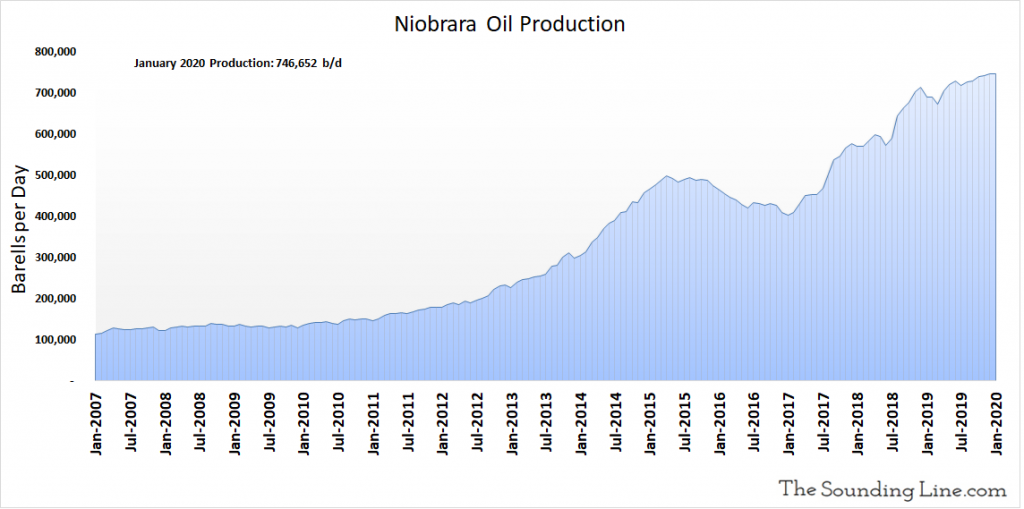
Legacy Oil Production
The following chart shows the production decline rate of wells older than a month. That decline rate hit an all-time high of -58,426 b/d in January 2020.
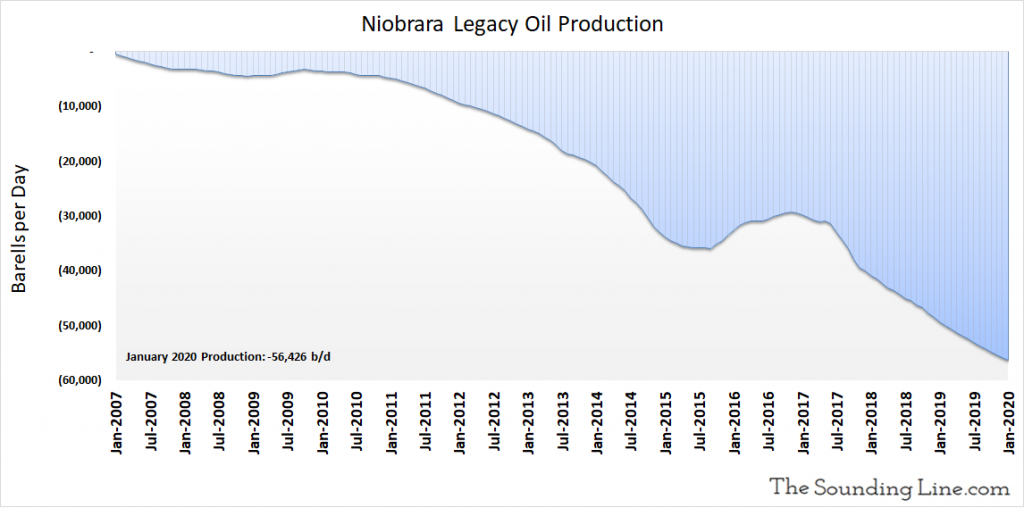
As a percent of total production, legacy oil production declines were 7.56% of total production. Relative to production, legacy declines have been fairly stable since early 2015.
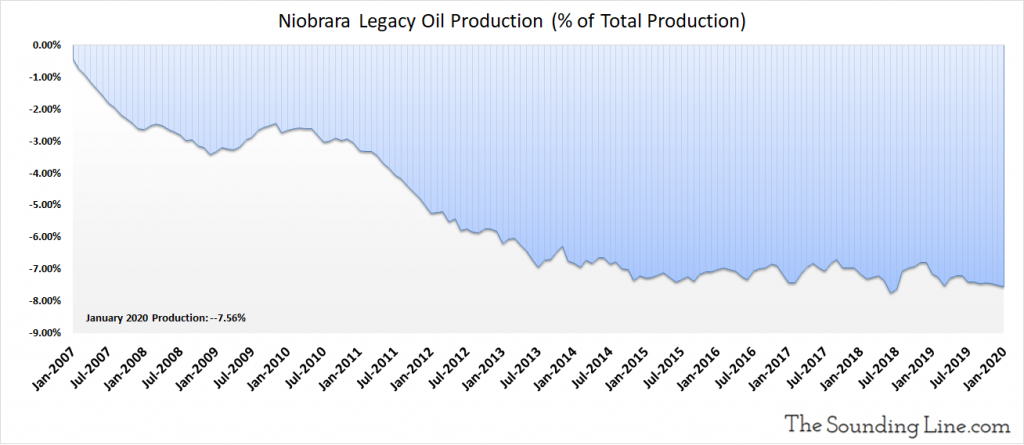
Rig Count
In November 2019, the most recent date for which data is available, there was estimated to be 47 rigs drilling new wells in the Niobrara basin. The rig count has fallen modestly since early 2019. Although the rig count is higher than it was during the oil price collapse of 2016, it remains far below levels prior to 2015.
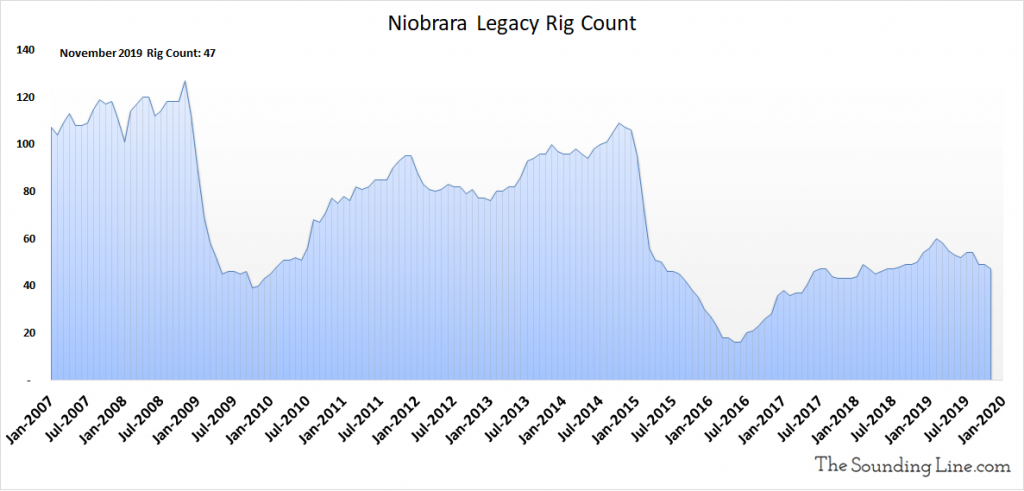
DUC Well Count
The DUC well count is the number of drilled but uncompleted wells in the Niobrara basin. These represent an inventory of wells that have already been drilled by rigs but are not yet producing oil and gas. This inventory fell to 490 wells in November 2019. DUC wells have been trending lower since early 2016 and declined by 26% between February and November of 2016 alone.
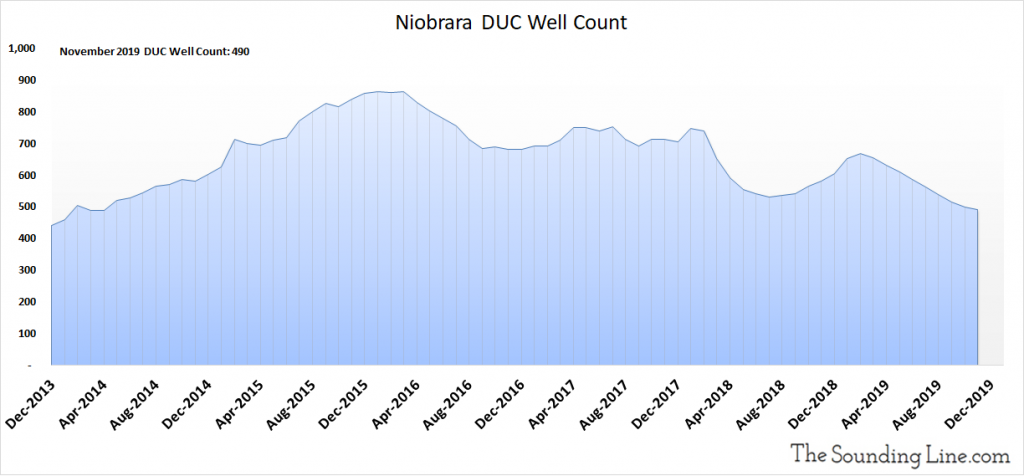
Wells Drilled per Month
The following chart shows the number of new oil and gas wells drilled every month. 180 wells were drilled in November 2019. This number has been declining slightly since early 2019, though it remains relatively high compared to the average since 2013. Given the lower number of rigs in the field compared to 2014, the pace of drilling has been fairly robust.
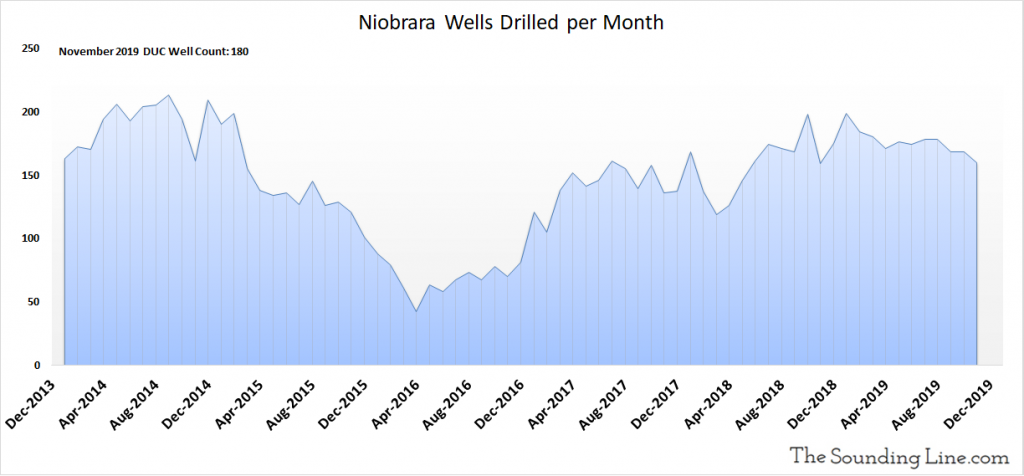
Oil Production from Wells Completed Each Month
The following chart shows the oil production from just those wells that were completed in any given month. That may include wells that were previously DUC wells, but that were completed that month. Production from newly completely wells was 57,059 b/d as of January 2020. This metric hit an all-time high in July 2017. Although it has declined since then, production from newly completed wells remains high and has trended higher over the years.
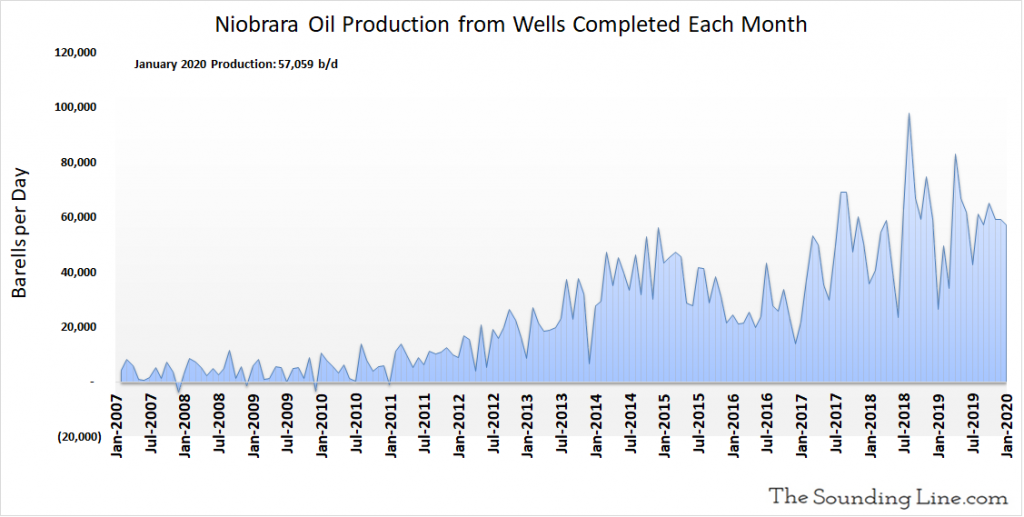
Oil Production from Wells Drilled and Completed Each Month, Excluding DUC Wells
The following chart excludes production from DUC wells that were completed in a given month and shows the production just from wells drilled and completed each month. It is an inferred number based on changes in production, legacy production, drilled wells, and completed wells. For months where the number of DUC wells increased, the implied production potential of those wells is included in the production figure even though that oil was not yet produced. Production from newly drilled and completed wells was 55,631 b/d as of November 2019. This metric peaked in August 2018 and has been declining since then. Nonetheless, it remains slightly above the average since 2013.
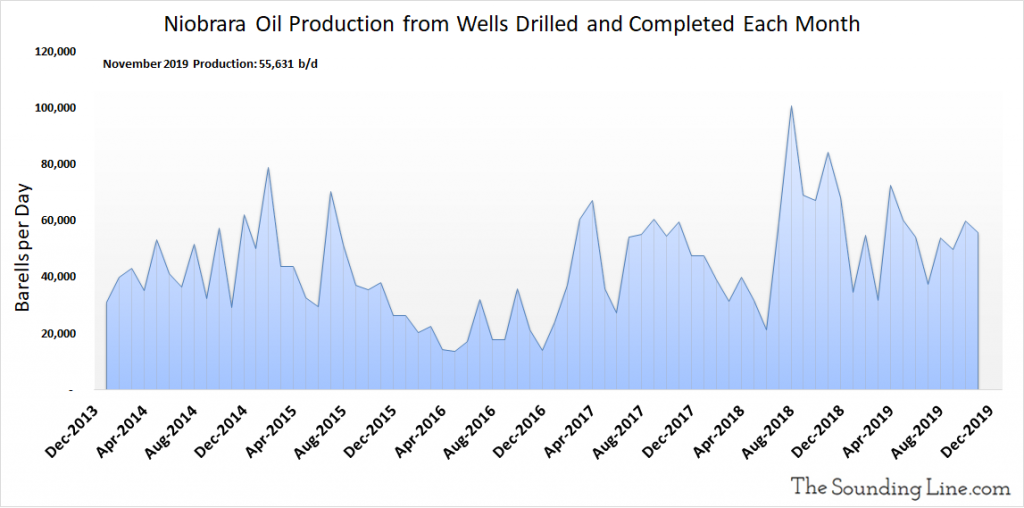
Oil Production per Well Completed Each Month
The following chart shows the oil production just from newly completed wells, per well, per month, including DUC wells that were completed. Production per completed well was 348 b/d as of November 2019. There has been no clear trend of increasing production per new well since at least 2013.

Natural Gas Production
Natural gas production in January 2020 hit an all-time record high slightly above 5.58 million Mcf/d.
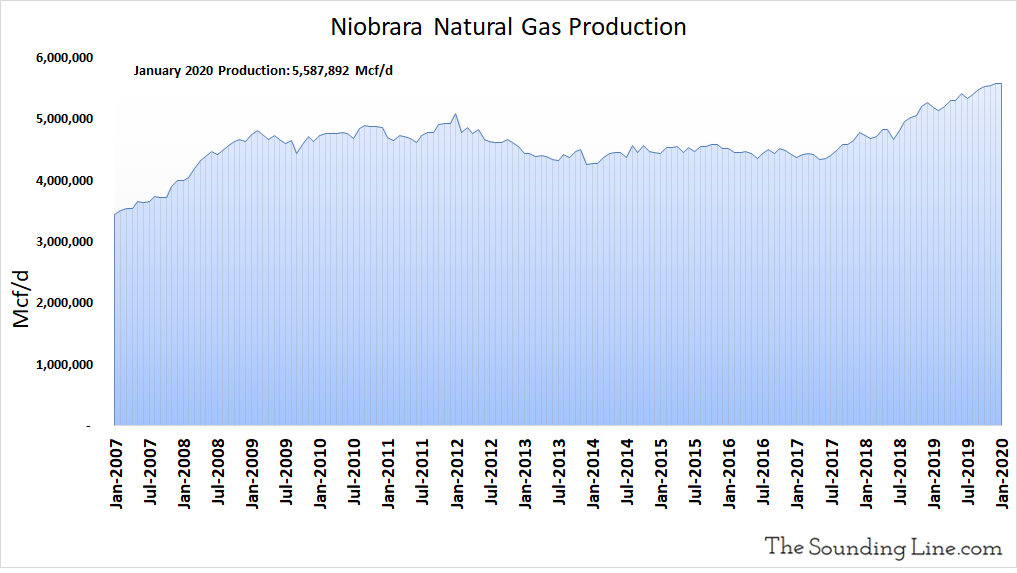
Legacy Natural Gas Production
As with legacy oil production, the following chart shows the production decline rate of wells older than a month. That decline rate reached an all-time high of -185,530 Mcf/d in January 2020.
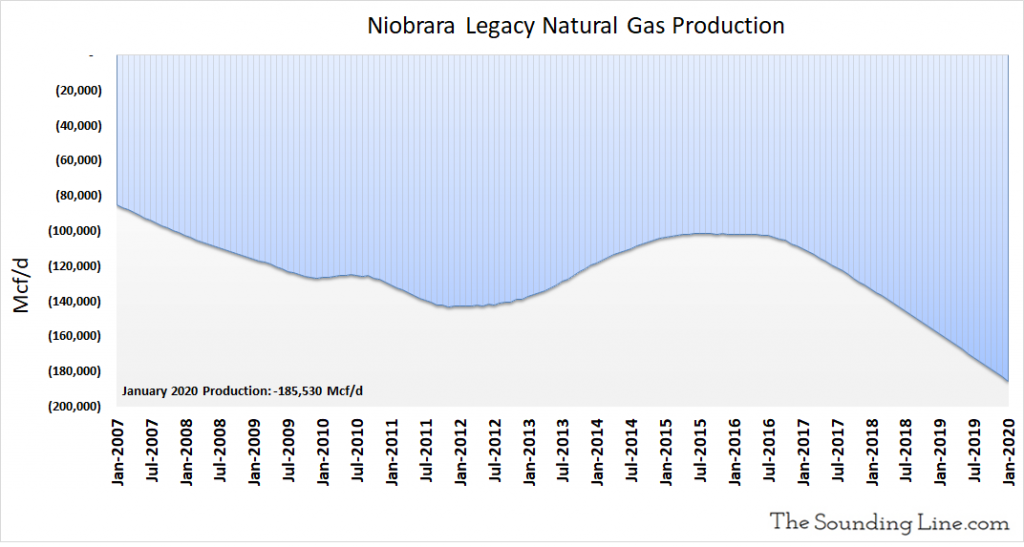
As a percent of total production, legacy declines inched up to an all-time high of -3.32% of production in January 2020. Although at a record, the increase in declines has been modest.
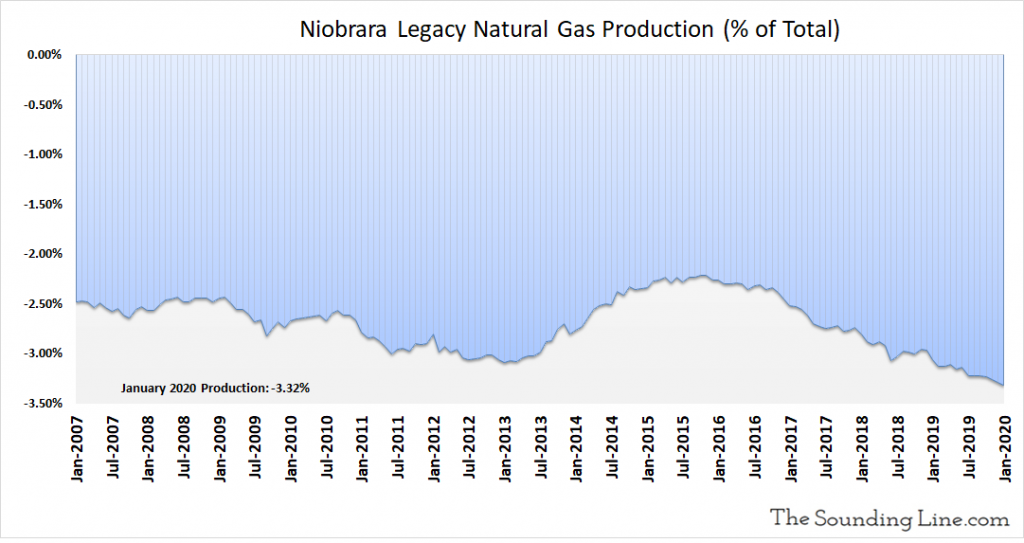
Gas Production from Wells Completed Each Month
The following chart shows the natural gas production from just those wells that were completed in any given month. That may include wells that were previously DUC wells. Production from newly completely wells was 198,768 Mcf/d as of January 2020. This metric has declined modestly since late 2018 but still remains above the average since 2007. There has been a modest ‘bulge’ in production from newly completed wells since early 2017 that may now be fading.
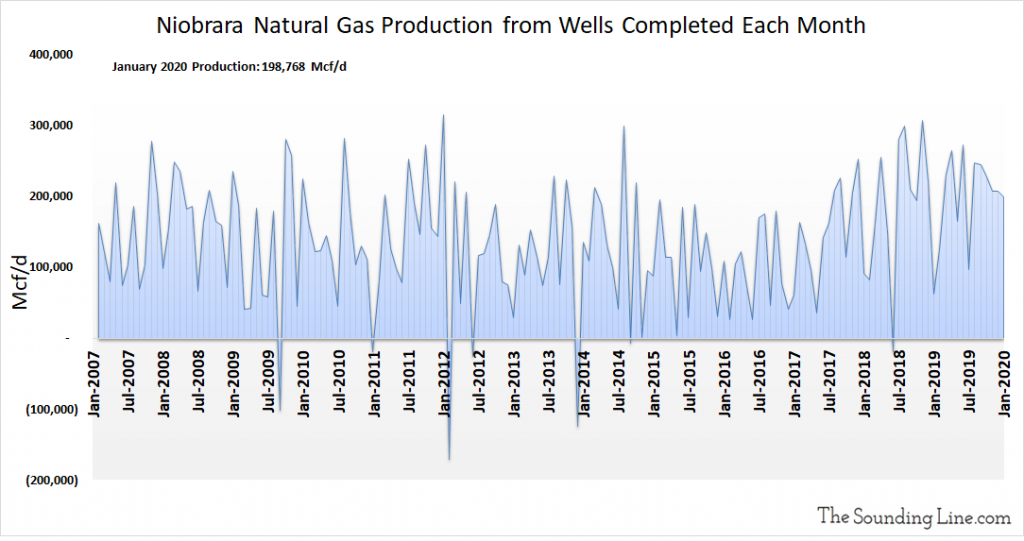
Gas Production from Wells Drilled and Completed Each Month, Excluding DUC Wells
The following chart excludes production from DUC wells completed in a given month and shows the production just from wells drilled and completed each month. It is an inferred number based on changes in production, legacy production, drilled wells, and completed wells. For months where the number of DUC wells increased, the implied production potential of those wells is included in the production figure, even though that gas was not yet produced. Production from newly drilled and completed wells was 194,550 Mcf/d as of November 2019. This metric began trending higher in early 2017 though it looks like that improvement is fading.
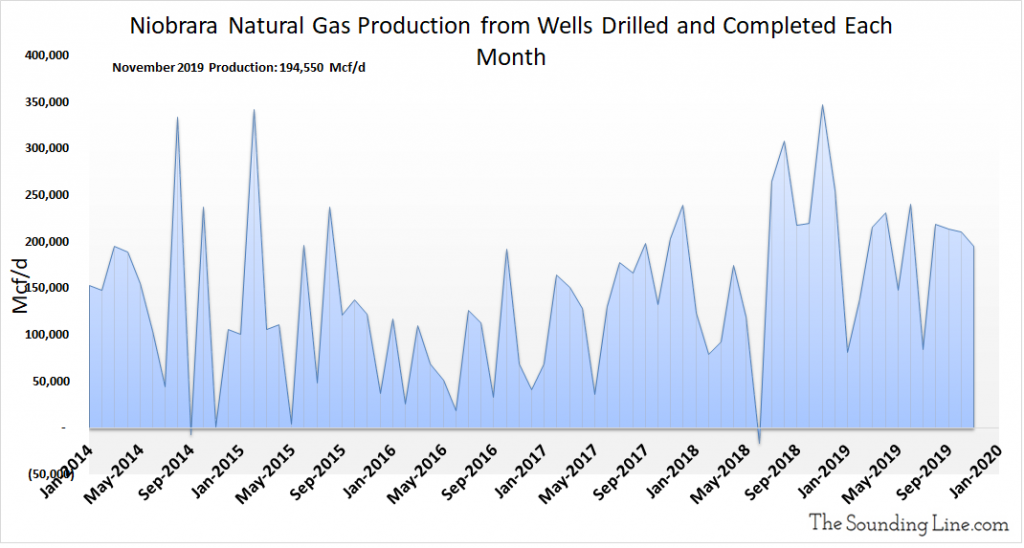
Gas Production from Wells Completed Each Month, per Well
Natural gas production each month from newly completed wells, per well, was 1,216 Mcf/d as of November 2019. There has been no clear trend of improvement in this metric since at least 2014.
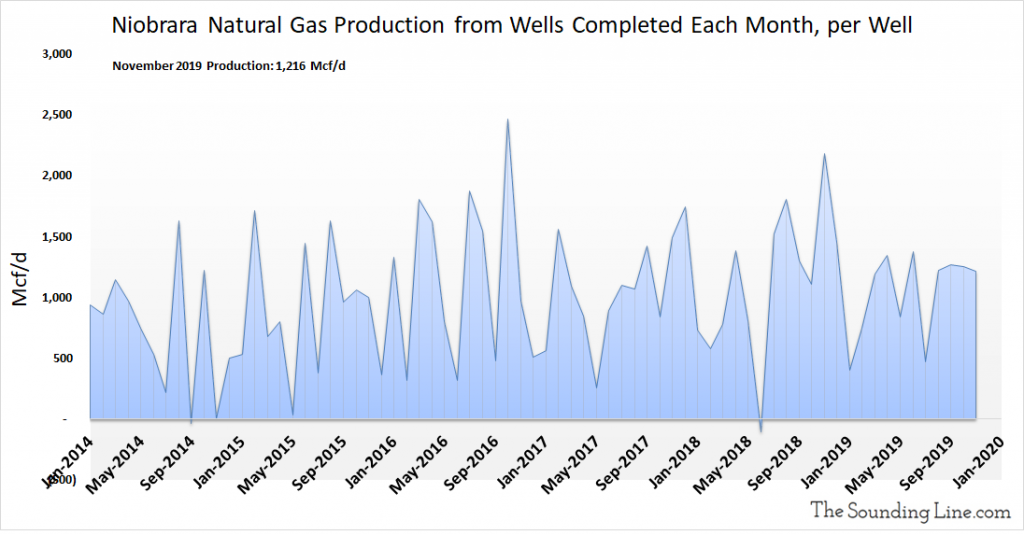
Some Thoughts
As has been the case with nearly all of the basins that we have looked at so far, per well oil and gas production from newly completed wells has not shown a clear increasing trend since at least 2014. While the production of oil and gas in the Niobrara basin has reached all time highs, that growth is mostly a result of completing more wells, not completing more productive wells.
Although the drilling activity of rigs in the field has been strong, the actual number of rigs in the field is relatively low and falling modestly. As a result, the number of new wells being drilled per month has started to decline.
Niobrara producers are burning through their inventory of DUC wells in order to keep an aggressive pace of oil and gas production. At the current pace of DUC well inventory depletion (26% in the past nine months), Niobrara will run through its DUC inventory within three years and, as we have repeatedly noted, some analysts believe that the EIA’s DUC well figures may be heavily inflated.
While Niobrara production may continue to rise on the back of DUC well completions for some additional time, unless the rig count rises meaningfully, oil and gas production is likely nearing its peak.
Would you like to be notified when we publish a new article on The Sounding Line? Click here to subscribe for free.
Would you like to be notified when we publish a new article on The Sounding Line? Click here to subscribe for free.

